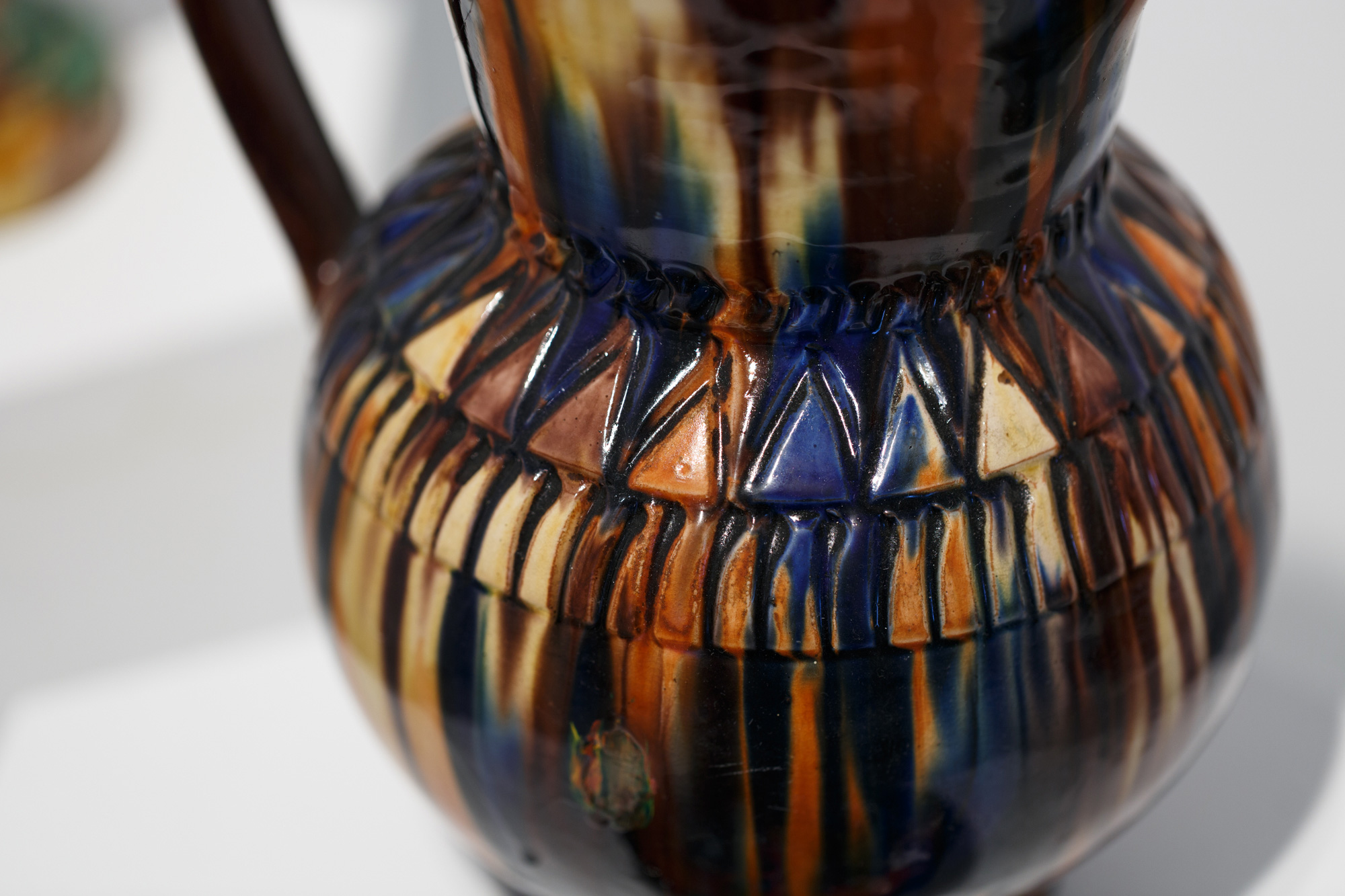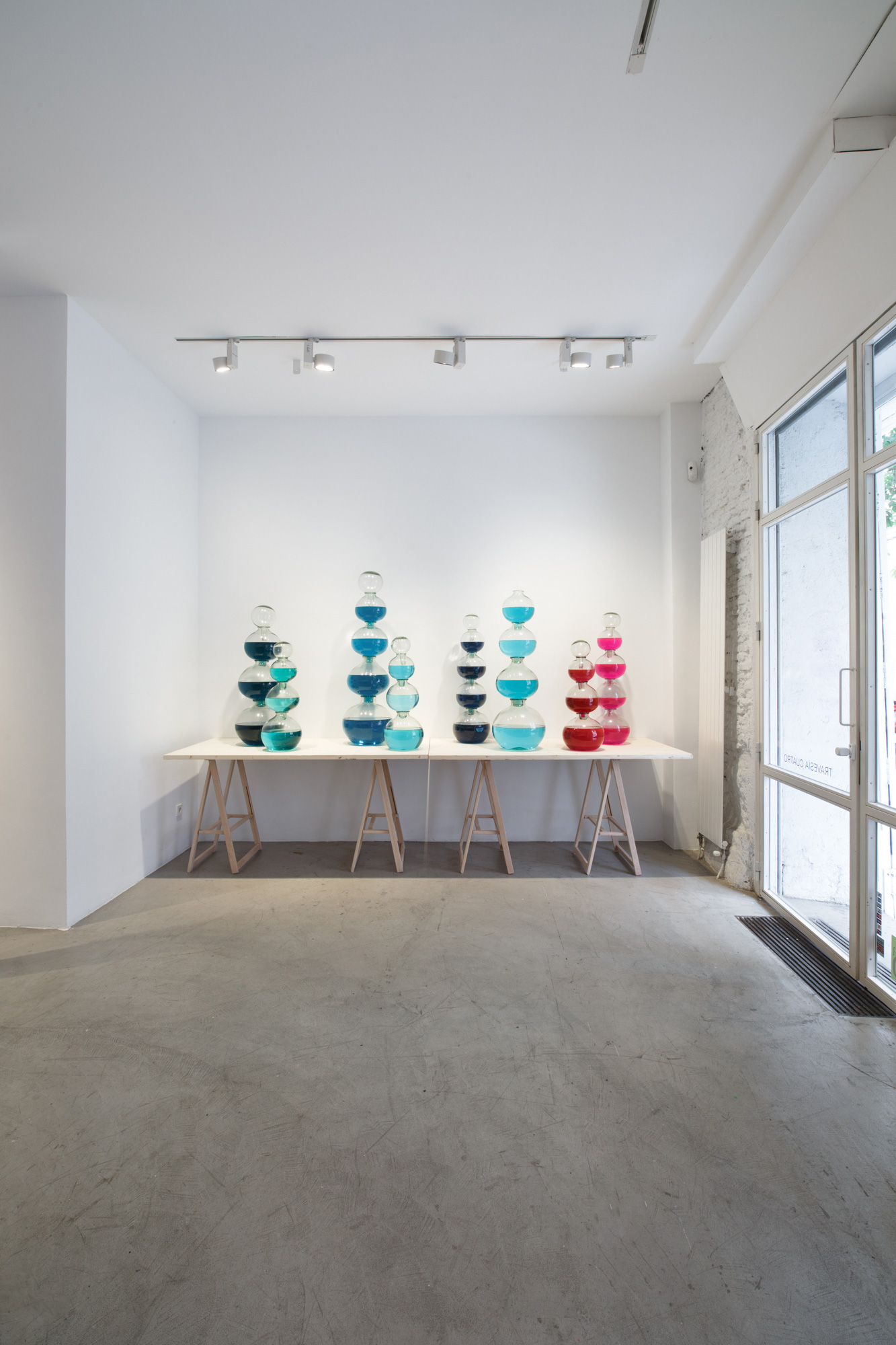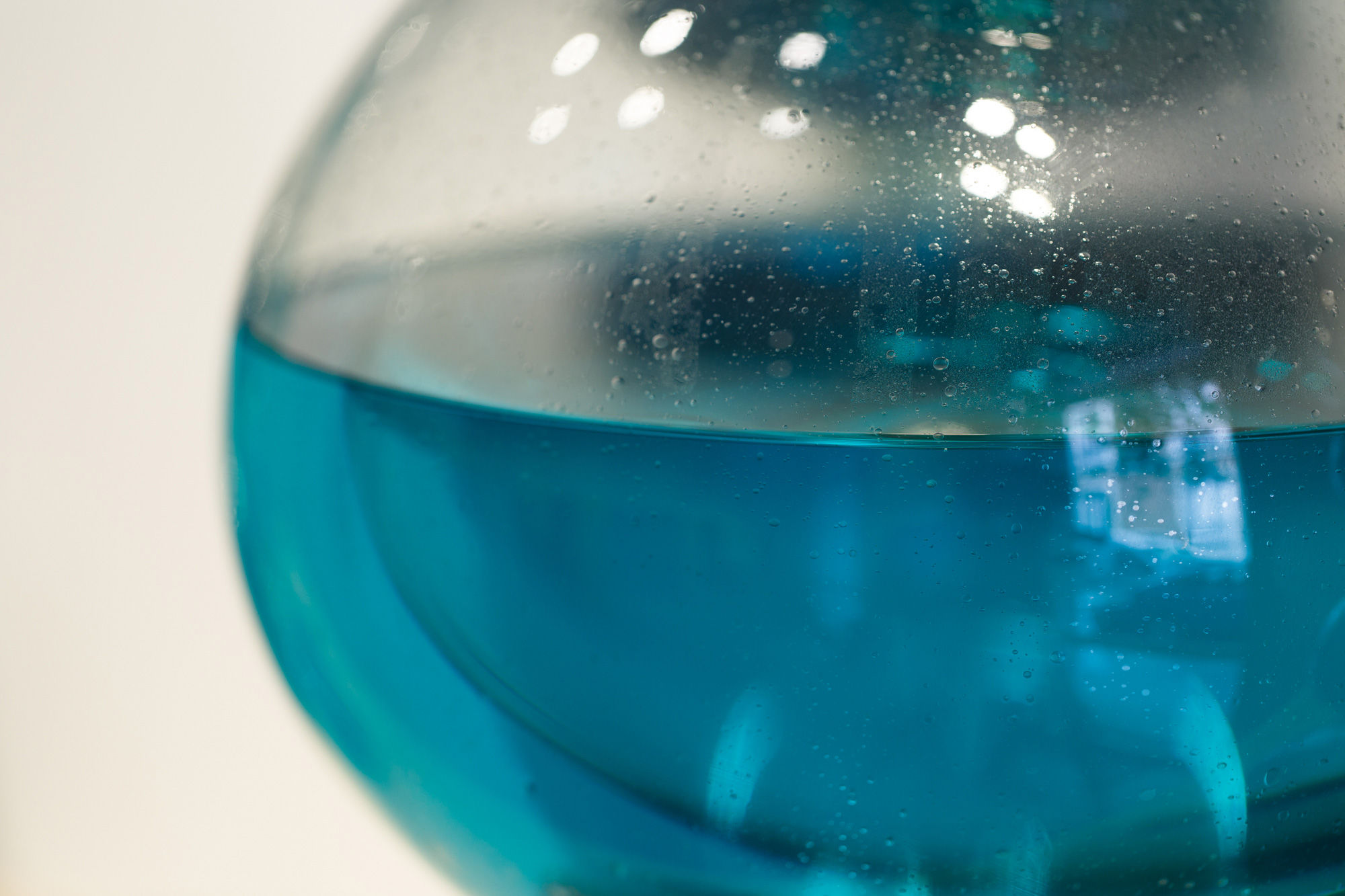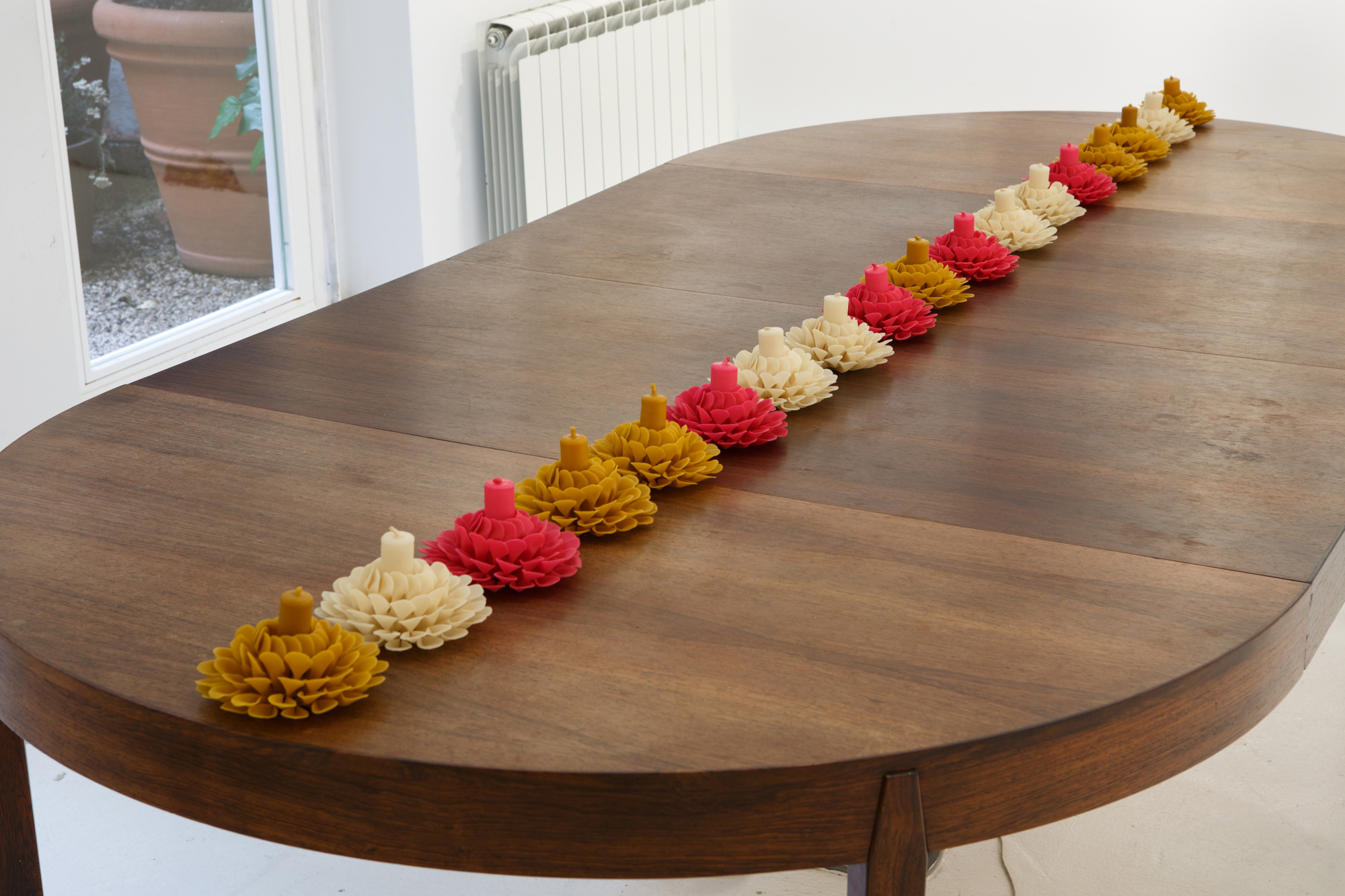- text
- pictures
“Even if the show goes on, the alarm is always sounding” [1]
I imagine these families of objects coming to life—converging as if in a whirlwind—all the sombreros and huaraches, like clouds of starlings, joining up and finding new combinations based on different categories, à la Borges: standing objects, terracotta or copper ones, fragile ones, ones used for drinking coffee, smooth ones, cold ones, ones that no one knows how to make anymore.
This show is part of a collection of collections that Claudia Fernández has amassed throughout her life and that has taken shape more recently through her collaboration with the curator Daniela Pérez in the development of the wide-ranging exhibition that took place at the Museo Tamayo de Ciudad de México some months ago.
Appearing here are diverse arrangements (the one of donuts and sweet pastries comes to mind) from various towns and regions that Claudia began to collect as early as her childhood family trips to visit artisans all over the vast terrain of Mesoamerica, and which we are now able to visit ourselves.
Any such collection begins with Claudia setting up an early-morning car to take her on a search for ceramic pieces from a certain woman who lives in a community more than four hours away from an administrative center. While chatting, like old friends almost, woman to woman around the fire, the griddle and the oven, they bring together the pieces, the origin of the style and its knowledge, the trials of the family, the meager means, remade every day like the eggs of chickens walking through the mud, the washing outside on the line, the corn masa.
These are constellations that swirl around themselves—giving shelter and something to wear, transporting food, aiding in cooking and eating, getting married or burying the dead, dressing up or playing. All this exists in the encounter between the directly material, the objects at hand (the agave, the tule plant, or earth, hide leather) and the less tangible, all that is necessary and indispensable in the recognition of one’s own self: I am a person of this place as long as I carry an embroidered huipil, witness to the fact that we hunger not only for food, but also for beauty. An encounter strung together by the movement of the conjurer’s hands, weathered but precise, to the rhythm of the seasons.
This agency of material is in turn transformed by the gaze and the hand of the artist in situating it in the museum, in the gallery. The ceremony changes; perhaps its very existence lies precisely in the fact of its changing. However, this is no longer merely the process of the functional object’s transformation into being an object of aesthetic contemplation, deepening the division between the social function of art and the recalcitrant and conservative notion of l’art pour l’art. Neither does it present the object as dispossessed of any function and simply in service of an idea—as was suggested by readymade art and taken up again later by pop art—in its inundation of the object on display.
All of these are processes that throw into question the status of the work of art and the conceptual metabolism around goods under capitalism. If at consumer society’s current heights the industrial and standardized production of the object is elevated at the same time as it is treated ironically, then so too since the very beginning there has been a certain longing, from Ruskin to Morris and beyond, for the object that is truly cared for, the fruit of manual creation, craftsmanship.
The existence of this collection makes visible the dynamic between those who manufacture and those who consume, and makes us think of the terms of this commercial relationship and thus the forms of making and doing—if we understand craftsmanship broadly as does Richard Sennet—as a commitment dedicated to carrying out an activity well, even if it is not manual: for instance artisanal journalism, geography, or even biomedical research.[2]
There are artists who display the arbitrary division between art and design and between art objects and everyday objects, function and beauty, constructing airplanes or shelters. Annie Albers—who tells in her memoirs of a moment of sadness and surprise in packing her suitcase before a trip and seeing that everything inside it had been made industrially and without any human trace—vehemently defended the importance of form: “Wholeness is not a utopian dream.”
But for Claudia, it is not about remaking, manipulating, or interfering in designs. The objects themselves transcend the condition of being products, the result of a process. This has as much to do with the artisan as it does with the artist who researches, studies, compiles.
These objects are revelatory insofar as folk art approaches ritual, “encompassing objects dedicated to the deities in the context of a pre-Hispanic and colonial cosmogony and syncretism as much as to the elements, to patron saints or festivals, and to the universe, resulting in objects adhering to a certain calendrical order. These objects are charged with an important millenarian force, representative of the spirit and the beliefs of a cultural group but also of a personal artistic sense, which I see somehow becoming extinct.”[3]
I would like to think that the cultures of European peasantry and indigenous Americans find common ground in their foods, their songs and beliefs, above the games of the conquistadors, and below the same masters.
This integrity is consubstantial with so-called folk art, as defended based on the Buddhist notion of beauty, associated with objects known as getemono (ge meaning common or ordinary and te meaning “out of nature”) and with the high esteem that comes with the fact that these ostensibly rudimentary pieces were kept by the greatest tea masters in Japan. In them can be seen a superior quality, a sophistication impossible to achieve for a court artist and that could easily go unnoticed by the uninitiated in this sensibility marked by scant decoration. This art is rooted in the idea of shibusa, which refers non-derogatorily to poverty: a noble and subtle austerity. In this unassuming, restrained, and subdued humility, this simple serenity—in this place the most beautiful creations possible are found. The master ceramicist and aesthetic theorist Soētsu Yanagi—who influenced both Bernard Leach and the later Arts and Crafts “revival” in England with the Mingei movement in the mid-twentieth century up to the 70s—associated the anonymous peasant artisan with the elevated consciousness of satori zen, creating pieces “that are ‘no-thought’ [and] nature themselves,” transcending the mind–material duality.[4] This is therefore contrary to the modern idea of the aristocratic artist or artisan, with dramatic and studied works that carry the maker’s signature.
In choosing to be a bridge and a mediator, Claudia Fernández shifts her attention to the ways in which the object circulates, which involves a questioning directed toward the transformation of values, toward a transformation of the social.
It is a place in which objects, which serve different purposes in our lives—here dormant, expectant—invite us to think about our habits, our desires, our needs. A radical commitment to a critical appetite for the exploration of our complicated relationship with capitalism and objects, marketing and status, in which the grandest luxury would be that of time, symbolically represented by the artisan object, made by hand.
Onto this artisan object we project all that we find impossible to give ourselves, unceasingly entrenched in our “busy-ness” as a synonym for social position and material accumulation.
If this is how it is in the West (with the United States as the paradigmatic case) in Mexico and in other places where strains of pre-capitalist, peasant, indigenous cultures still exist—with different values regarding change and use, beauty and identity—this can be seen as a celebration of what is different, toward a re-encounter and a new appreciation, without an exoticization of the other. An alliance and recognition, also economic, of the rural population that is so often excluded from the cultural conversation, if not outright exploited.
Claudia’s collections exist therefore between the desire to understand—grouping and cataloguing—as typical of the anthropologist, and the interrogation of modernity itself: pieces (assemblages of both the work of the artisan and the gaze of the artist) that are not static but rather are involved in the day to day of an ancestral way of life and at the same time in the most pressing questions of our time: the call to un-growth, to craftsmanship as a vital state, another economy: one of focus and satisfaction in labor and of a necessary re-encounter with city/country, art, and the people.
Fernando García-Dory
May, 2018
[1] Ami Barak, “Usefulness – an extension beyond an intention” en “Return to function”, MMoCA , 2009.
[2] R. Sennet, El artesano Anagrama, 2009.
[3] Correspondence with Claudia Fernández, 2018.
[4] Sōetsu Yanagi, The Unknown Craftsman, (New York: Kodanshu, 1972).



















































































